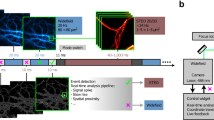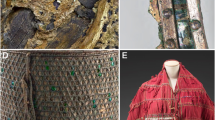Abstract
There can be no doubt that the finest creator of beauty is Mother Nature. And in many ways, science is the exploration of this beauty and of the mechanisms that have created it. Microscopy, as a technique in scientific investigation, has had a key role in uncovering nature's beauty, which has led some to propose that microscopy could be described as an art or even an art form. But is this claim justified?
This is a preview of subscription content, access via your institution
Access options
Subscribe to this journal
Receive 12 print issues and online access
$189.00 per year
only $15.75 per issue
Buy this article
- Purchase on Springer Link
- Instant access to full article PDF
Prices may be subject to local taxes which are calculated during checkout









Similar content being viewed by others
References
Rose window. Curr. Biol. 1, 311 (1991).
Orci, L. The insulin cell: its cellular environment and how it processes (pro)insulin. Diabetes/Metabolism Reviews 2, 71–106 (1986).
Orci, L. Banting Lecture 1981: macro- and micro-domains in the endocrine pancreas. Diabetes 31, 538–565 (1982).
Orci, L., Humbert, F., Brown, D. & Perrelet, A. Membrane ultrastructure in urinary tubules. Int. Rev. Cytology 73, 183–242 (1981).
Nature 364, index page (1993).
Orci, L. & Perrelet, A. Freeze fracture histology 53 (Springer Verlag, Berlin/Heidelberg, 1975).
Orci, L. & Perrelet, A. Freeze fracture histology 92 (Springer Verlag, Berlin/Heidelberg, 1975).
Orci, L. Minkowsky Lecture: a portrait of the pancreatic B-cell. Diabetologia 10, 163–187 (1974).
Acknowledgements
We thank the many friendly eyes and minds that helped us write this essay. The illustrations stem from Lelio Orci's research that has been funded by the Swiss National Science Foundation and the University of Geneva since 1972.
Author information
Authors and Affiliations
Corresponding author
Related links
Related links
DATABASES
FURTHER READING
Rights and permissions
About this article
Cite this article
Orci, L., Pepper, M. Microscopy: an art?. Nat Rev Mol Cell Biol 3, 133–137 (2002). https://doi.org/10.1038/nrm726
Issue Date:
DOI: https://doi.org/10.1038/nrm726
This article is cited by
-
Autograft microskin combined with adipose-derived stem cell enhances wound healing in a full-thickness skin defect mouse model
Stem Cell Research & Therapy (2019)



